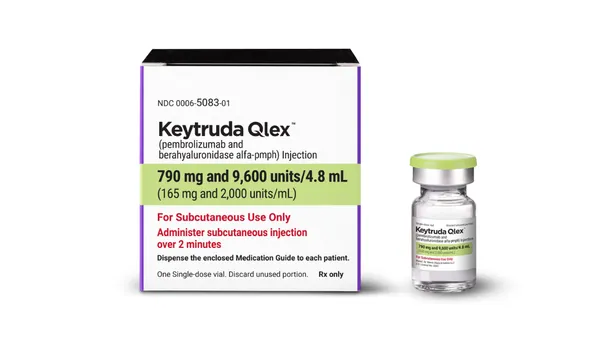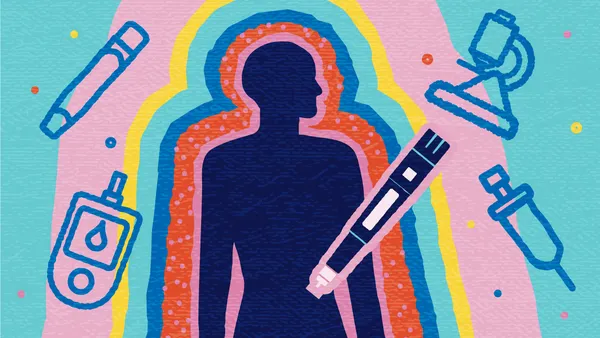Pharma Trax Sales, marketing, And R&D Trends affecting the healthcare industry Parents Hesitant to let Children Participate in Clinical Trials Only one in four U.S. adults would consider allowing their children to participate in clinical trials. This is one of the results of a Harris Interactive poll of 5,822 U.S. adults conducted online between May 10, 2004, and May 17, 2004, for the Wall Street Journal Online’s Health Industry Edition. But many factors would greatly increase the likelihood of parents allowing their children to participate in clinical trials, including: hope that the drug would cure their children (75%), if their children had a terminal illness (73%), if there were no risks involved (72%), if their children’s current treatment options were no longer effective (70%), or if participating would benefit their children or someone else’s children (69%). According to the poll, almost four out of five adults (79%) would likely allow their children to participate in clinical trials if they were diagnosed with cancer; 69% would allow participation if their children were diagnosed with diabetes; and 62% would allow participation if the diagnosis were chronic headaches. Another factor that would increase the likelihood of parents allowing their children to participate in clinical trials is the probability that their children would not receive a placebo. Of those who would consider having their children participate in a study, 80% would be likely to allow participation if there was no chance of receiving a placebo. As the chance of receiving a placebo increases, the likelihood of allowing participation decreases. Demand for Biochips to Grow U.S. demand for biochip products and services is projected to increase 20% annually to $2.1 billion in 2008. This is the finding of a recent study by The Freedonia Group Inc. Biochips (microarrays) are expected to account for $875 million of the $2.1 billion, with the remaining $1.2 billion divided among related instruments, reagents, and other software and services. Growth will be led by uses in drug discovery and epidemiological research, with protein analysis and gene expression profiling providing the fastest expanding applications. DNA chips will continue to generate broad usage in genomic research. But sales of laboratory and protein chips will expand faster as pharmaceutical researchers shift the focus of drug discovery toward proteomics. By 2013, protein chips will account for the largest demand among microarrays, at more than $1 billion. Demand for biochip instruments is projected to grow more than 13% annually from 2003. Growth opportunities for detection, sample preparation, and hybridization equipment will continue to expand as pharmaceutical and other life-sciences researchers diversify into proteomic investigations. The market for biochip-related services is projected to reach $600 million in 2008, an annual increase of 19% from 2003. Subscription rights to use proprietary technologies and systems, along with contract research in the area of drug discovery, will continue to make up the largest share of demand. Medical-Affairs Departments Structure for Global Success On average, medical-affairs departments outsource 48% of activities. Activities most often outsourced include: data management/biostatistics (74%) and medical communications (68%). These are the findings of a recent report by Best Practices LLC. The study, Medical Affairs Excellence: Structuring, Aligning and Funding for Global Success, also found that benchmark companies average 389 medical-affairs employees. Additionally, 73% of surveyed companies have the head of medical-affairs department reporting directly to the head of country, regional, or global pharmaceutical business. The remaining 27% report either to heads of research and development or to commercial operations. online physician Marketing Growing Slowly Online brand marketing is 9% of direct-to-physician budgets, according to a recent survey of pharmaceutical executives by Jupiter Research. The overall share of physician-directed marketing dollars allocated to brands on the Internet is comparatively low, say analysts. But these online investments account for several high-cost initiatives, including online continuing medical education, Website development, and online detailing. The actual spending on each of these tactics is still comparatively low considering the strong opportunity to reach doctors online. Direct-to-physician online marketing budgets are expected to increase slowly during the next 13 months to 18 months. According to the Jupiter survey, nine of 10 executives surveyed said they plan to increase their online direct-to-physician budgets in 2005. From 2003 to 2004, 54% of executives said they increased their online brand budgets by more than 3%, 33% kept spending level, and 8% decreased online spending. Marketers’ investment priorities in 2005 will remain similar to those in 2004. According to analysts at Jupiter Research, the top tactics that will receive increased spending include: online detailing, product Websites, and e-mail marketing. At least 90% of pharmaceutical marketers said their online detailing programs have been moderately or highly successful in increasing volume of scripts. As a result, 82% of these brands are increasing spending on this tactic in 2005. Biogenerics Poised for Growth The market for generic and biogeneric drugs is poised for rapid growth because of patent expirations for many blockbuster products. There also has been a conscious move to increase the use of generic and biogeneric products for containing healthcare expenses. New analysis from Frost & Sullivan, World Generics and Biogenerics Markets, reveals that U.S. sales of generics are expected to grow by 11.8% through 2010, to $71.9 billion in 2010 from $35.4 billion in 2003. With more than two dozen patent expirations expected during the forecast period in the United States, health-plan providers in the United States are offering incentives for plan members to use generic medicines to restrain expenditure on healthcare. The nationalized healthcare system in Europe also is taking similar steps to control drug spending. As a result, generics and biogeneric drugs are emerging as strong contenders to branded medications in virtually all global pharmaceuticals and biotechnology markets. In Asia and the rest-of-world regions, generic drug manufacturers — aided by weak patent laws — already have introduced generic versions of drugs still under patent protection. “The new World Trade Organization (WTO) ruling allows export of medicines that address conditions deemed as national health crises in developing countries,” says Dhiraj Ajmani, senior analyst at Frost & Sullivan. “As a result, large new markets are being created for generics producers, ensuing strong double-digit growth for the market leaders.” Participants in the biogeneric and generic drug market in developed countries must overcome the challenges arising from ambiguous regulations and complicated patent processes. “Uncertainties about patent infringements and regulatory processes form a major setback for market participants,” Mr. Ajmani says. “Currently, regulations pertaining to introduction of generics apply only to small-molecule drugs, while the regulatory process for large-molecule, protein-based biotech products is yet to be defined.” Americans Favor Drug Importation More than 80% of Americans believe U.S. citizens should be able to purchase drugs from outside the United States, according to a new study by NOP World Health. Canada is the only country, however, that the majority of Americans (60%) view as a safe source of prescription products. Just 30% would feel comfortable buying drugs from Western Europe and comfort levels drop below 10% for other parts of the world. Only 4% of Americans, for instance, would feel comfortable, if they thought their prescription drugs came from Central America, the Middle East, or Africa. “Based on our findings, we can expect to see more Americans traveling to Canada to buy prescription drugs at lower prices than they can find in the United States,” says Andrea McDonough, senior director of market events at NOP World Health. “We also can anticipate that Americans will be scrutinizing Websites more closely to ensure the prescription drugs they’re buying come from Canada rather than another country.” The desire to save money remains the primary reason Americans are willing to purchase drugs from non-U.S. sources. A 25% discount seems to be the level that pushes consumers toward considering filling their prescriptions in Canadian, rather than American, pharmacies. Hypertension, depression/ anxiety, and high cholesterol are the classes most vulnerable to importation, as consumers seek to save on their prescriptions. Although most Americans support importation, only one in 10 has actually acted to purchase a drug outside the United States. Most often, those who have bought non-U.S. drugs have either traveled to Canada or ordered Canadian drugs on the Internet. Chris James According to Chris James, VP of Best Practices, 73% of surveyed companies have the head of medical-affairs department reporting directly to the head of country, regional, or global pharmaceutical business. Dhiraj Ajmani Large new markets are created for generics producers, ensuing strong double-digit growth for the market leaders, says Frost & Sullivan’s Senior Analyst Dhiraj Ajmani. Andrea McDonough Our results show that although they want to save money, Americans clearly believe there is a safety risk in buying prescription products outside the United States, especially if the drugs come from anywhere but Canada, says Andrea McDonough, Senior Director of Market Events for NOP World Health. Follow up Best Practices LLC, Chapel Hill, N.C., is a leader in best practices benchmarking and offers extensive project experience in the application of continuous-improvement and best-practice benchmarking strategies. For more information, visit best-in-class.com. The Freedonia Group Inc., Cleveland, is an international business research company. For more information, visit freedoniagroup.com. Frost & Sullivan, San Antonio, is a global growth consultancy, covering a broad spectrum of industries. For more information, visit frost.com. Harris Interactive, Rochester, N.Y., is a worldwide market research and consulting firm best known for The Harris Poll and for pioneering the Internet method to conduct scientifically accurate market research. For more information, visit harrisinteractive.com. Jupiter Research, New York, a division of Jupitermedia Corp., provides unbiased research, analysis, and advice to help companies profit from the impact of the Internet and emerging technologies on their business. For more information, visit jupiterresearch.com. NOP World Health, East Hanover, N.J., is a supplier of primary research to the global healthcare community and is the health-focused arm of NOP World, a top 10 market-research company. For more information, visit nopworld.com. Demand for Biochip Products and Services ($ are in millions) 2000 2003 2008 All Products $301.0 $596.0 $1,480.0 Biochips 128.0 287.0 875.0 Instruments 78.2 140.0 263.0 Reagents 68.6 123.0 245.0 Software 26.2 46.0 97.0 Services 136.0 256.0 600.0 Total $437.0 $852.0 $2,080.0 Source: The Freedonia Group Inc., Cleveland. For more information, visit freedoniagroup.com.
An article from












